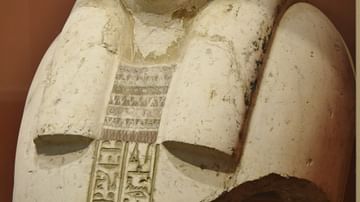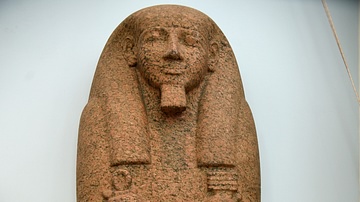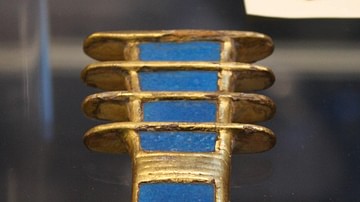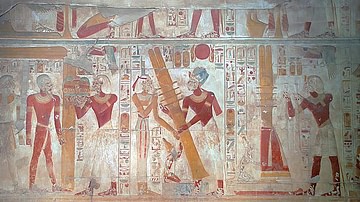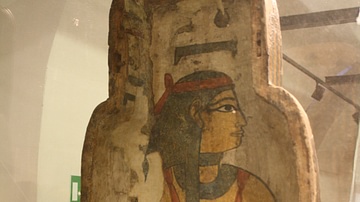Illustration
Setau, a viceroy of Nubia for Ramesses II, assumes the pose of Osiris, god of the afterlife. His crossed hands claps a djed (right) and tit (left), symbols of performance and life linked to Osiris and consort Isis. Below, the sky goddess Nut protects his body with her wings. Some of the gods mentioned in the text are shown receiving Setau's worship: Osiris (twice), the mummification god Anubis (jackal-headed), and the protector of the lungs called Hapy (baboon-headed). Isis and Nephthys mourn at the foot end. 19th Dynasty, reign of Ramesses II, circa 1279-1213 BCE. From the tomb of Setau (no. 289) at Dra Abu el-Naga, Thebes, Egypt. (The British Museum, London).
About the Author
Cite This Work
APA Style
Amin, O. S. M. (2016, July 21). Sarcophagus Lid of Setau. World History Encyclopedia. Retrieved from https://www.worldhistory.org/image/5336/sarcophagus-lid-of-setau/
Chicago Style
Amin, Osama Shukir Muhammed. "Sarcophagus Lid of Setau." World History Encyclopedia. Last modified July 21, 2016. https://www.worldhistory.org/image/5336/sarcophagus-lid-of-setau/.
MLA Style
Amin, Osama Shukir Muhammed. "Sarcophagus Lid of Setau." World History Encyclopedia. World History Encyclopedia, 21 Jul 2016, https://www.worldhistory.org/image/5336/sarcophagus-lid-of-setau/. Web. 16 Apr 2025.



